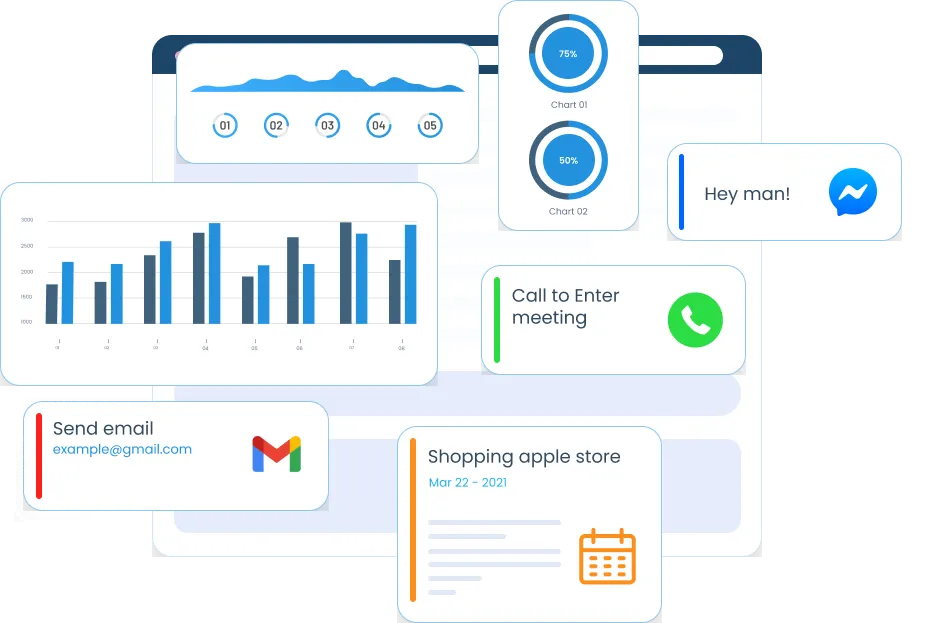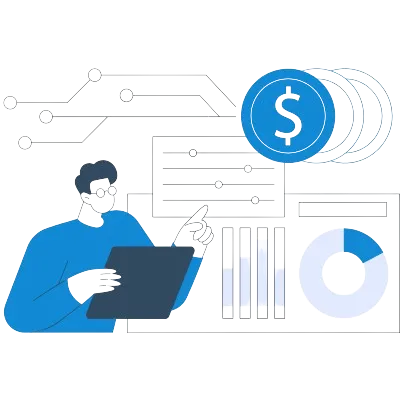The Ultimate Tax Business Automation System - Done For You

The Ultimate Tax Business Automation System - Done For You

The Ultimate Done For You Tax Business Automator CRM & Software

Welcome to Premier Wizard: Automate Your Tax Business
Are you a tax professional looking to streamline and enhance your tax business? Look no further than Premier Wizard, your ultimate partner in automating and optimizing your tax processes. Whether you're a seasoned tax consultant or a growing tax firm, our innovative solutions are designed to simplify your workload, increase efficiency, and elevate client satisfaction.
Capture New Leads:
Automating repetitive tasks such as data entry, document management, and workflow tracking allows your team to focus on higher-value activities.
Client Communication Automation: Enhance client satisfaction with automated communication tools
Funnel Builder: Easily create gorgeous, high-converting landing pages on your domain with Premier Wizard drag-and-drop builder.
Survey Builder: Build and publish your forms in just minutes. No drudgery, just quick and easy form-building.
Chat Widget: Answer questions in real time or have an automated bot provide responses to any landing page or website you add a little snippet of code to!


Nurture Your Contacts:
Once you’ve captured a lead’s information, communicate with them directly from the platform. Premier Wizard's tools ensure that client information is processed accurately.
Dialer System: Make calls directly from your Premier Wizard account with our Twilio integration. Listen to call recordings and create specific contact lists to dial to.
Membership Portal: Build, create, and host courses directly from Premier Wizard. Enter people manually or have them automatically added via our checkout page options.
Two-Way Communication:Give the ability of texting to your business. Now you can increase the speed of conversation all in one platform. Available on Desktop and Mobile!

Close More Deals:
Staying organized is key when it comes to making more sales. Premier Wizard provides multiple methods to stay on top of your leads and collect the payments you deserve.
Opportunities: Map out your potential customers journey and visually watch them move through the stages using our pipeline view.
Contacts: Easily tag, sort, filter, and create lists of specific types of contacts within Premier Wizard to keep yourself and your team organized
Payments & Invoicing: You can create, track, and send invoices right in the Premier Wizard dashboard and collect payments using Stripe or Paypal.


Automate & Scale:
Gain valuable insights into your operations with analytics and reporting features. Track key performance indicators, monitor client trends, and make data-driven decisions to optimize your business strategy.
Social Media Planner: Draft, preview, and post content right now or schedule it in the future on Facebook, Instagram, LinkedIn and Google!
Workflow Management: With Premier Wizard, you’ll be able to create automated follow up campaigns to any Lead, Prospect or Client all in one central place.
Reputation Management: Generate and respond to reviews on Google & Facebook while having the ability to send review requests to your clients in one simple click!

Support & Training:
Learning a new software doesn’t need to be hard. Premier Wizard provides customized support to deliver the best customer experience.
Training Portal: When you enroll you’ll get access to our video training portal which provides step-b-step walkthroughs of getting your account up and running as fast as possible.
Live Chat: You have a question? We have the answer! Just click the little “Chat” window in the bottom left of Premier Wizard to speak to our support team.
Onboarding Call: Receive a complimentary Zoom onboarding call with one of our specialists to help guide you through the setup process.

Who Is This Business Training For?
The idea of offering services in the financial space - especially tax preparation services - can be intimidating for people with no background or experience.
But the truth is, you don’t need to have a degree to offer this service, nor do you need years of experience.
And that’s why I’ve designed this training program to work for almost everyone, regardless of prior experience, knowledge, and skills by teaching what you need to know to build your business from scratch, in a comprehensive, step-by-step, and easy-to-follow structure.

This program is made for:

People wanting to achieve financial freedom - for themselves and for their families - by building and growing their own business.

People with zero business experience - regardless of the industry - and looking to change the trajectory of their financial life.

People looking for a way to create their own wealth and leave their 9-5 jobs, and to become their own boss.

People who want to take back control of their time and energy, and be able to decide how to live their lives, without being at the mercy of their employers.

With Our 24/7 Support, We Back Your Business
Our commitment to round-the-clock assistance ensures that you have the support you need. Whether it’s resolving technical issues, addressing concerns, or providing expert guidance, our team is always available to provide timely support.

Elevate Your Tax Business Potential With Our CRM
With customized settings tailored to your brand, you can optimize your experience with trusted industry-specific snapshots allowing you to jumpstart your process. Discover new tips and tricks to extend the functionality of your CRM, empowering you to achieve more significant results.

Strengthen & Enhance B2B & B2C Relationship
Our software strategically enhances B2B relationships by enabling operational efficiency and providing analytical insights. With personalized interaction, streamlined communication, and data-driven decision-making, our CRM acts as a strategic asset, fostering collaboration and driving mutual success.
Premier Wizard
Supporting Tax Professionals Success Through Our All-Inclusive Sales & Marketing Platform
At Premier Wizard, we are dedicated to supporting the success of tax professionals through our all-inclusive sales and marketing platform. Our comprehensive solution is designed to streamline your practice's growth by offering a suite of powerful tools and resources tailored to your unique needs. From advanced lead generation techniques and personalized marketing strategies to client management solutions and performance analytics

Premier Tax Pro University’s Tax Business Growth and Done-For-You Business Automator
FEATURES:
LEGAL:
INTEGRATIONS
AFFILIATES:
GETTING STARTED:
CONTACT US:
Let’s talk about what Premier Wizard can do for your business.
Email: [email protected]
Phone Number : 786.730.8100
Address :8440 NW 27th Avenue #112 Miami, FL 33147
